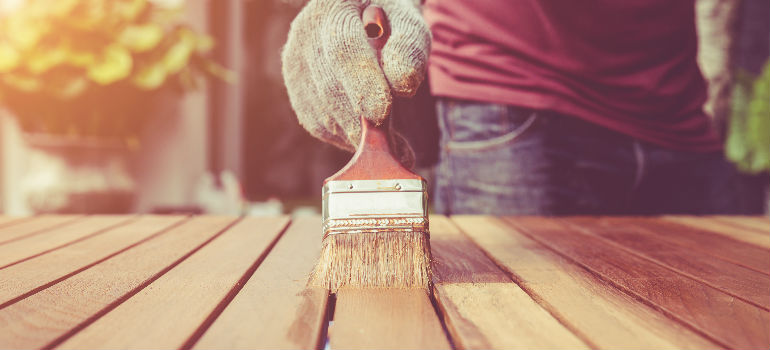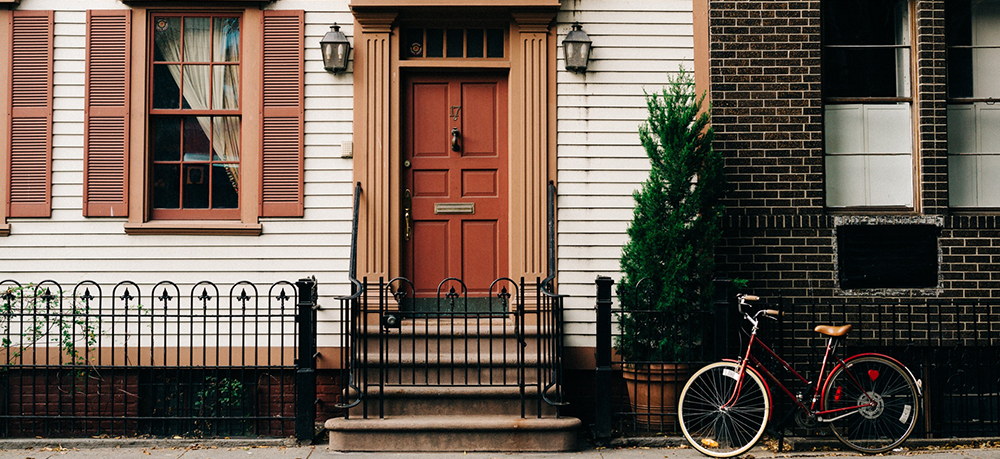
If you’re the handyman of your own home, then you definitely have painted your interior before. And, as an experienced painter, you know paint brushes need special care in order to be used at their full capacity again.
In this guide, the Fantastic Handyman Painting and Decorating team will explain how to care for paint brushes after use.
Table of Contents
Types of paint brushes
There are four main types of paint brushes, according to the material they are made from.
- Natural hair brushes. Natural hair paint brushes are top quality and work best with oil-based paints.
- Synthetic hair bushes. Brushes with synthetic hair are made from polyester or nylon, which is why they are tougher than the natural hair ones. They are cheaper, however, they do have their disadvantages as the bristles tend to fall out during the process of painting.
- Flagged brushes. Flagged paint brushes have bristles with split ends. They are exclusively used for painting with latex. The split ends help with retaining more paint on the brush. It also leaves fewer marks while painting the wall.
- Sized brushes. Brushes come in all forms and sizes and you can’t call yourself a painter unless you have at least a few different ones. Small brushes, big brushes, brushes for angles, and many more.
Check also:
Protect Your Walls: The Comprehensive Guide to Anti-Mould Paint
How to care for paint brushes after use
It doesn’t matter what kind of paint brushes you have – the way to take care of them properly is always the same.
- Clean the brush immediately after usage. In order to extend the lifespan of your brush and not throw it in the bin too early, you should clean the paint brushes immediately after usage.
- Clean the brush between paintings. If you’re taking breaks between paintings, for example, a 15-minute break between walls, you should use the opportunity to clean up your brush. Even if you’ll be using the same paint after that.
- Wash the base of the bristles. The area near the ferrule is the hardest to clean, but to be really able to do it properly, you have to start from there. Even if it will take you more than 15 minutes.
- Never store your brushes vertically in the water. Leaving your brush in a vertical position in water or any kind of cleaning solvent will easily bend the bristles, changing their form forever. Not only that, but water can also get into the base of the bristles and loosen the glue holding them, resulting in bristles falling out.
- Store clean brushes vertically, head-side up. Or horizontally, whichever you find best. Make sure they’re dry before storing them away. As long as the head side is undisturbed by any pressure, you’re good to go.
Check also:
Pros and Cons of Painting the Ceiling the Same Colour As the Walls
How to clean paint brushes
Here is a more detailed guide on how to clean and dry paint brushes.
- Wipe the brush to remove most of the residue. You can use paper towels or rags, the point is not to start with water right away. This way, the rest of the cleaning process will be easier.
- Rinse the brush. Pour the brush into a bowl of water or solvent and swirl it around to remove as much residue paint as possible.
- Wipe again. Use a paper towel or cloth towel to remove excess solvent. But if you were using only water in the previous step, you can skip this one.
- Rinse under running water. Take your brush to the sink and place the bristles under running water. Scrub them with a finger to make sure you’ve removed anything unnecessary between them. And, while you’re at it, wash away any paint residue from the handle as well.
- Blot out the extra water. Make sure the bristles have not bent in any unnecessary position. Straighten them while they’re still wet and blot all the excess water with a cloth towel.
Check also:
15 Must Have Tools for Every Homeowner
How to keep paint brushes soft
With time, any brush tends to harden its bristles, even the natural hair ones. This would make future painting projects more difficult to handle. So, if you value your brushes and would prefer to try and fix their hardened bristles, here is what you can do instead of throwing them away.
- Boil in vinegar. Place your brush in a saucepan full of vinegar and boil it for a few minutes or until the bristles are able to move.
- Scrape off excess paint. You might not be seeing it, but the bristles have most likely hardened because of paint residue. Remove the brushes from the boiling vinegar and use a metal spatula to scrape off anything remaining after the boiling.
- Boil again. Repeat the boiling process, if your brushes need it. Sometimes, a few minutes alone aren’t enough, and if the bristles are still too hard to separate, do it again.
- Rub conditioner through the bristles. After you’re done with the boiling and you’re sure there is no more paint in the way, cover the bristles completely with a conditioner.
- Place all brushes in plastic bags.
- Place the bags in hot water. The heat will help the conditioner to get into the bristles easily. Leave them there for an hour.
- Rinse the brushes. After another rinse, your brushes should be soft and ready for use.
Need a Handyman?
Enter your postcode to view our rates and availability in your area.
For questions about the services we offer visit our main site or you can always call us at 020 3404 4045
Image Source: Freedom_Studio/shutterstock.com



